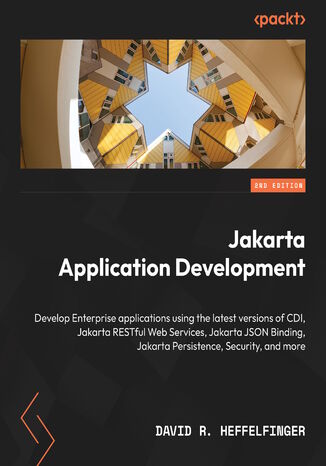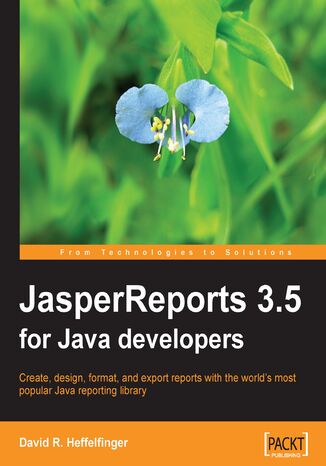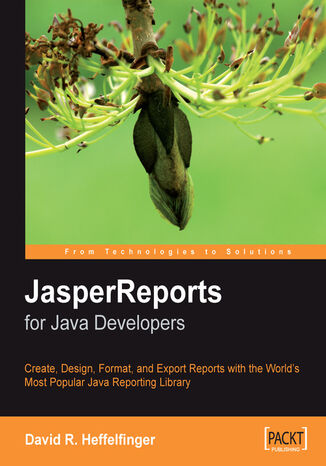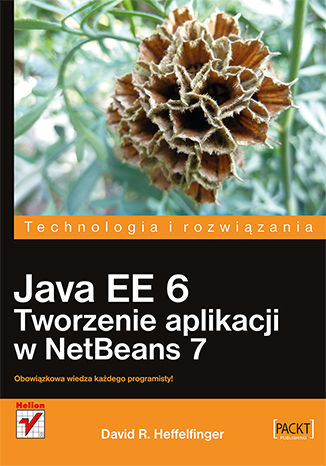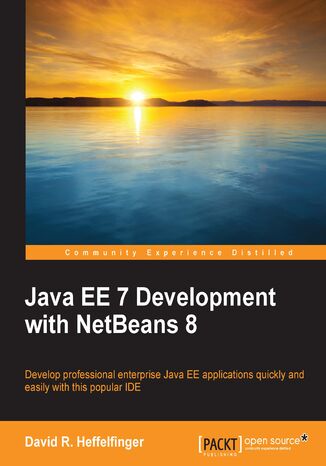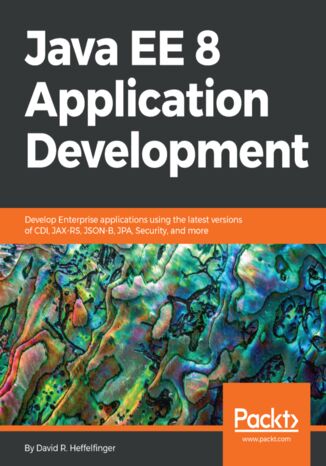Kategorien
E-Books
-
Wirtschaft
- Bitcoin
- Geschäftsfrau
- Coaching
- Controlling
- E-Business
- Ökonomie
- Finanzen
- Börse und Investitionen
- Persönliche Kompetenzen
- Computer im Büro
- Kommunikation und Verhandlungen
- Kleines Unternehmen
- Marketing
- Motivation
- Multimedia-Training
- Immobilien
- Überzeugung und NLP
- Steuern
- Sozialpolitik
- Handbȕcher
- Präsentationen
- Führung
- Public Relation
- Berichte, Analysen
- Geheimnis
- Social Media
- Verkauf
- Start-up
- Ihre Karriere
- Management
- Projektmanagement
- Personal (HR)
-
Für Kinder
-
Für Jugendliche
-
Bildung
-
Enzyklopädien, Wörterbücher
-
E-Presse
- Architektura i wnętrza
- Sicherheit und Gesundheit am Arbeitsplatz
- Biznes i Ekonomia
- Haus und Garten
- E-Business
- Ekonomia i finanse
- Esoterik
- Finanzen
- Persönliche Finanzen
- Unternehmen
- Fotografie
- Informatik
- HR und Gehaltsabrechnung
- Frauen
- Computer, Excel
- Buchhaltung
- Kultur und Literatur
- Wissenschaftlich und akademisch
- Umweltschutz
- meinungsbildend
- Bildung
- Steuern
- Reisen
- Psychologie
- Religion
- Landwirtschaft
- Buch- und Pressemarkt
- Transport und Spedition
- Gesundheit und Schönheit
-
Geschichte
-
Informatik
- Office-Programme
- Datenbank
- Bioinformatik
- IT Branche
- CAD/CAM
- Digital Lifestyle
- DTP
- Elektronik
- Digitale Fotografie
- Computergrafik
- Spiele
- Hacking
- Hardware
- IT w ekonomii
- Wissenschaftliche Pakete
- Schulbücher
- Computergrundlagen
- Programmierung
- Mobile-Programmierung
- Internet-Server
- Computernetzwerke
- Start-up
- Betriebssysteme
- Künstliche Inteligenz
- Technik für Kinder
- Webmaster
-
Andere
-
Fremdsprachen lernen
-
Kultur und Kunst
-
Lektüre
-
Literatur
- Anthologien
- Ballade
- Biografien und Autobiografien
- Für Erwachsene
- Drama
- Tagebücher, Memoiren, Briefe
- Epos
- Essay
- Science Fiction
- Felietonys
- Fiktion
- Humor, Satire
- Andere
- Klassisch
- Krimi
- Sachbücher
- Belletristik
- Mity i legendy
- Nobelpreisträger
- Kurzgeschichten
- Gesellschaftlich
- Okultyzm i magia
- Erzählung
- Erinnerungen
- Reisen
- Gedicht
- Poesie
- Politik
- Populärwissenschaftlich
- Roman
- Historischer Roman
- Prosa
- Abenteuer
- Journalismus
- Reportage
- Romans i literatura obyczajowa
- Sensation
- Thriller, Horror
- Interviews und Erinnerungen
-
Naturwissenschaften
-
Sozialwissenschaften
-
Schulbücher
-
Populärwissenschaft und akademisch
- Archäologie
- Bibliotekoznawstwo
- Filmwissenschaft
- Philologie
- Polnische Philologie
- Philosophie
- Finanse i bankowość
- Erdkunde
- Wirtschaft
- Handel. Weltwirtschaft
- Geschichte und Archäologie
- Kunst- und Architekturgeschichte
- Kulturwissenschaft
- Linguistik
- Literaturwissenschaft
- Logistik
- Mathematik
- Medizin
- Geisteswissenschaften
- Pädagogik
- Lehrmittel
- Populärwissenschaftlich
- Andere
- Psychologie
- Soziologie
- Theatrologie
- Teologie
- Theorien und Wirtschaftswissenschaften
- Transport i spedycja
- Sportunterricht
- Zarządzanie i marketing
-
Handbȕcher
-
Spielanleitungen
-
Professioneller und fachkundige Leitfaden
-
Jura
- Sicherheit und Gesundheit am Arbeitsplatz
- Geschichte
- Verkehrsregeln. Führerschein
- Rechtswissenschaften
- Gesundheitswesen
- Allgemeines. Wissenskompendium
- akademische Bücher
- Andere
- Bau- und Wohnungsrecht
- Zivilrecht
- Finanzrecht
- Wirtschaftsrecht
- Wirtschafts- und Handelsrecht
- Strafrecht
- Strafrecht. Kriminelle Taten. Kriminologie
- Internationales Recht
- Internationales und ausländisches Recht
- Gesundheitsschutzgesetz
- Bildungsrecht
- Steuerrecht
- Arbeits- und Sozialversicherungsrecht
- Öffentliches, Verfassungs- und Verwaltungsrecht
- Familien- und Vormundschaftsrecht
- Agrarrecht
- Sozialrecht, Arbeitsrecht
- EU-Recht
- Industrie
- Agrar- und Umweltschutz
- Wörterbücher und Enzyklopädien
- Öffentliche Auftragsvergabe
- Management
-
Führer und Reisen
- Afrika
- Alben
- Südamerika
- Mittel- und Nordamerika
- Australien, Neuseeland, Ozeanien
- Österreich
- Asien
- Balkan
- Naher Osten
- Bulgarien
- China
- Kroatien
- Tschechische Republik
- Dänemark
- Ägypten
- Estland
- Europa
- Frankreich
- Berge
- Griechenland
- Spanien
- Niederlande
- Island
- Litauen
- Lettland
- Mapy, Plany miast, Atlasy
- Miniführer
- Deutschland
- Norwegen
- Aktive Reisen
- Polen
- Portugal
- Andere
- Przewodniki po hotelach i restauracjach
- Russland
- Rumänien
- Slowakei
- Slowenien
- Schweiz
- Schweden
- Welt
- Türkei
- Ukraine
- Ungarn
- Großbritannien
- Italien
-
Psychologie
- Lebensphilosophien
- Kompetencje psychospołeczne
- zwischenmenschliche Kommunikation
- Mindfulness
- Allgemeines
- Überzeugung und NLP
- Akademische Psychologie
- Psychologie von Seele und Geist
- Arbeitspsychologie
- Relacje i związki
- Elternschafts- und Kinderpsychologie
- Problemlösung
- Intellektuelle Entwicklung
- Geheimnis
- Sexualität
- Verführung
- Aussehen ind Image
- Lebensphilosophien
-
Religion
-
Sport, Fitness, Diäten
-
Technik und Mechanik
Hörbücher
-
Wirtschaft
- Bitcoin
- Geschäftsfrau
- Coaching
- Controlling
- E-Business
- Ökonomie
- Finanzen
- Börse und Investitionen
- Persönliche Kompetenzen
- Kommunikation und Verhandlungen
- Kleines Unternehmen
- Marketing
- Motivation
- Immobilien
- Überzeugung und NLP
- Steuern
- Sozialpolitik
- Handbȕcher
- Präsentationen
- Führung
- Public Relation
- Geheimnis
- Social Media
- Verkauf
- Start-up
- Ihre Karriere
- Management
- Projektmanagement
- Personal (HR)
-
Für Kinder
-
Für Jugendliche
-
Bildung
-
Enzyklopädien, Wörterbücher
-
E-Presse
-
Geschichte
-
Informatik
-
Andere
-
Fremdsprachen lernen
-
Kultur und Kunst
-
Lektüre
-
Literatur
- Anthologien
- Ballade
- Biografien und Autobiografien
- Für Erwachsene
- Drama
- Tagebücher, Memoiren, Briefe
- Epos
- Essay
- Science Fiction
- Felietonys
- Fiktion
- Humor, Satire
- Andere
- Klassisch
- Krimi
- Sachbücher
- Belletristik
- Mity i legendy
- Nobelpreisträger
- Kurzgeschichten
- Gesellschaftlich
- Okultyzm i magia
- Erzählung
- Erinnerungen
- Reisen
- Poesie
- Politik
- Populärwissenschaftlich
- Roman
- Historischer Roman
- Prosa
- Abenteuer
- Journalismus
- Reportage
- Romans i literatura obyczajowa
- Sensation
- Thriller, Horror
- Interviews und Erinnerungen
-
Naturwissenschaften
-
Sozialwissenschaften
-
Populärwissenschaft und akademisch
- Archäologie
- Philosophie
- Wirtschaft
- Handel. Weltwirtschaft
- Geschichte und Archäologie
- Kunst- und Architekturgeschichte
- Kulturwissenschaft
- Literaturwissenschaft
- Mathematik
- Medizin
- Geisteswissenschaften
- Pädagogik
- Lehrmittel
- Populärwissenschaftlich
- Andere
- Psychologie
- Soziologie
- Teologie
- Zarządzanie i marketing
-
Handbȕcher
-
Professioneller und fachkundige Leitfaden
-
Jura
-
Führer und Reisen
-
Psychologie
- Lebensphilosophien
- zwischenmenschliche Kommunikation
- Mindfulness
- Allgemeines
- Überzeugung und NLP
- Akademische Psychologie
- Psychologie von Seele und Geist
- Arbeitspsychologie
- Relacje i związki
- Elternschafts- und Kinderpsychologie
- Problemlösung
- Intellektuelle Entwicklung
- Geheimnis
- Sexualität
- Verführung
- Aussehen ind Image
- Lebensphilosophien
-
Religion
-
Sport, Fitness, Diäten
-
Technik und Mechanik
Videokurse
-
Datenbank
-
Big Data
-
Biznes, ekonomia i marketing
-
Cybersicherheit
-
Data Science
-
DevOps
-
Für Kinder
-
Elektronik
-
Grafik / Video / CAX
-
Spiele
-
Microsoft Office
-
Entwicklungstools
-
Programmierung
-
Persönliche Entwicklung
-
Computernetzwerke
-
Betriebssysteme
-
Softwaretest
-
Mobile Geräte
-
UX/UI
-
Web development
-
Management
Podcasts
Jakarta EE stands as a robust standard with multiple implementations, presenting developers with a versatile toolkit for building enterprise applications. However, despite the advantages of enterprise application development, vendor lock-in remains a concern for many developers, limiting flexibility and interoperability across diverse environments.This Jakarta EE application development guide addresses the challenge of vendor lock-in by offering comprehensive coverage of the major Jakarta EE APIs and goes beyond the basics to help you develop applications deployable on any Jakarta EE compliant runtime.This book introduces you to JSON Processing and JSON Binding and shows you how the Model API and the Streaming API are used to process JSON data. You’ll then explore additional Jakarta EE APIs, such as WebSocket and Messaging, for loosely coupled, asynchronous communication and discover ways to secure applications with the Jakarta EE Security API. Finally, you'll learn about Jakarta RESTful web service development and techniques to develop cloud-ready microservices in Jakarta EE.By the end of this book, you'll have developed the skills to craft secure, scalable, and cloud-native microservices that solve modern enterprise challenges.
JasperReports 3.5 for Java Developers
David R Heffelfinger, David R. Heffelfinger, Teodor Danciu
Do you want to create easily understood, professional, and powerful reports from disordered, scattered data using a free, open source Java class library? If your answer is yes, this book on JasperReports is what you are looking for. JasperReports is the world's most popular embeddable Java open source reporting library, providing Java developers with the power to easily create rich print and web reports. The book has been fully updated to use JasperReports 3.5, the latest version of JasperReports. Previously accepted techniques that have now been deprecated have been replaced with their modern counterparts. All examples in the book have been updated to use XML schemas for report templates. Coverage of new data sources that JasperReports now supports has been added to the book. Additionally, JasperReports can now export reports to even more formats than before and exporting reports to these new formats is covered in this new edition of the book.This book shows you exactly how to get started, and develop the skills to get the most from JasperReports. It introduces you to the latest version of JasperReports, and gets you creating complex and elegant reports.The book steers you through each point of report setup, to creating, designing, formatting, and exporting reports with data from a wide range of data sources, and integrating JasperReports with other Java frameworks.Starting with the basics of adding reporting capabilities to your application and creating report templates, you will first see how to produce your reports through the use of JRXML files, custom ANT targets, and then preview them in both the web browser and the native browser of JasperReports.Getting data into your reports is the next step, and you will see how to get data from a range of data sources, not only databases, but XML files, and Java Objects, among others.You will create better looking reports with formatting and grouping, as well as adding graphical elements to your reports. You will export your reports to a range of different formats, including PDF and XML.Creating reports will be made even easier with a walkthrough of the iReport Designer visual designing tool. To round things off, you will see how to integrate your reports with other Java frameworks, using Spring or Hibernate to get data for the report, and Java Server Faces or Struts for presenting the report.All examples have been updated to use XML schemas. New export formats, such as OpenDocument Text, and new data sources now supported by JasperReports are now covered in this updated edition.
JasperReports for Java Developers
David R. Heffelfinger, David R Heffelfinger, Teodor Danciu
JasperReports is the world's most popular embeddable Java open source reporting library, providing Java developers with the power to easily create rich print and web reports. This book shows you exactly how to get started, and develop the skills to get the most from JasperReports.The book steers you through each point of report setup, to creating, designing, formatting, and exporting reports with data from a wide range of datasources, and integrating JasperReports with other Java frameworks.Starting with the basics of adding reporting capabilities to your application, and creating report templates you will first see how to produce your reports through the use of JRXML files, custom ANT targets, and then see preview them in both the browser and the native browser of JasperReports.Getting data into your reports is the next step, and you will see how to get data from a range of datasources, not only databases, but XML files, and Java Objects, among others.You will create better looking reports with formatting and grouping, as well as adding graphical elements to the report. You will export your reports to a range of different formats, including PDF and XML.Creating reports will be made even easier with a walkthrough of the iReport Designer visual designing tool. To round things off, you will see how to integrate your reports with other Java frameworks, using Spring or Hibernate to get data for the report, and Java Server Faces or Struts for presenting the report.
Java EE 6. Tworzenie aplikacji w NetBeans 7
Obowiązkowa wiedza każdego programisty! Java EE to zbiór zaawansowanych technologii, pozwalających stworzyć nowoczesną aplikację o doskonałej architekturze. Jeżeli żądasz najwyższej wydajności, niezawodności, jakości oraz elastyczności, to Java EE jest prawdopodobnie najlepszym wyborem. Jeżeli chcesz się skupić na postawionym zadaniu i nie masz ochoty zmagać się z problemami z konfiguracją czy środowiskiem pracy, wybierz lidera wśród darmowych IDE. NetBeans zapewnia pełne wsparcie dla Javy EE, a praca z nim to czysta przyjemność. W trakcie lektury tej wyjątkowej książki poznasz najlepsze techniki pracy z tym duetem. Zaznajomisz się z możliwościami Javy EE oraz przekonasz się, jak bardzo NetBeans może ułatwić Ci pracę. Na wstępie dowiesz się, jak zainstalować, dostosować do własnych potrzeb oraz przygotować do pracy środowisko NetBeans. Na kolejnych stronach zdobędziesz wiedzę związaną z serwletami, JSP oraz JSF. Ponadto nauczysz się korzystać z Java Persistence API oraz projektować i uruchamiać usługi sieciowe. Książka ta jest doskonałym źródłem wiedzy dla wszystkich programistów języka Java, chcących wykorzystać potencjał NetBeans w tworzeniu zaawansowanych aplikacji. Dzięki tej książce: poznasz możliwości Javy EE dostosujesz NetBeans do własnych preferencji wykorzystasz w pełni wsparcie NetBeans dla Javy EE zwiększysz swoją produktywność! Poznaj najlepsze techniki pracy z NetBeans!
Java EE is an Enterprise Java standard. Applications written to comply with the Java EE specification do not tie developers to a specific vendor; instead they can be deployed to any Java EE compliant application server. With this book, you’ll get all the tools and techniques you need to build robust and scalable applications in Java EE 8. This book covers all the major Java EE 8 APIs including JSF 2.3, Enterprise JavaBeans (EJB) 3.2, Contexts and Dependency Injection (CDI) 2.0, the Java API for WebSockets, JAX-RS 2.1, Servlet 4.0, and more.The book begins by introducing you to Java EE 8 application development and goes on to cover all the major Java EE 8 APIs. It goes beyond the basics to develop Java EE applications that can be deployed to any Java EE 8 compliant application server.It also introduces advanced topics such as JSON-P and JSON-B, the Java APIs for JSON processing, and the Java API for JSON binding. These topics dive deep, explaining how the two APIs (the Model API and the Streaming API) are used to process JSON data.Moving on, we cover additional Java EE APIs, such as the Java API for Websocket and the Java Message Service (JMS), which allows loosely coupled, asynchronous communication. Further on, you’ll discover ways to secure Java EE applications by taking advantage of the new Java EE Security API.Finally, you’ll learn more about the RESTful web service development using the latest JAX-RS 2.1 specification. You’ll also get to know techniques to develop cloud-ready microservices in Java EE.

